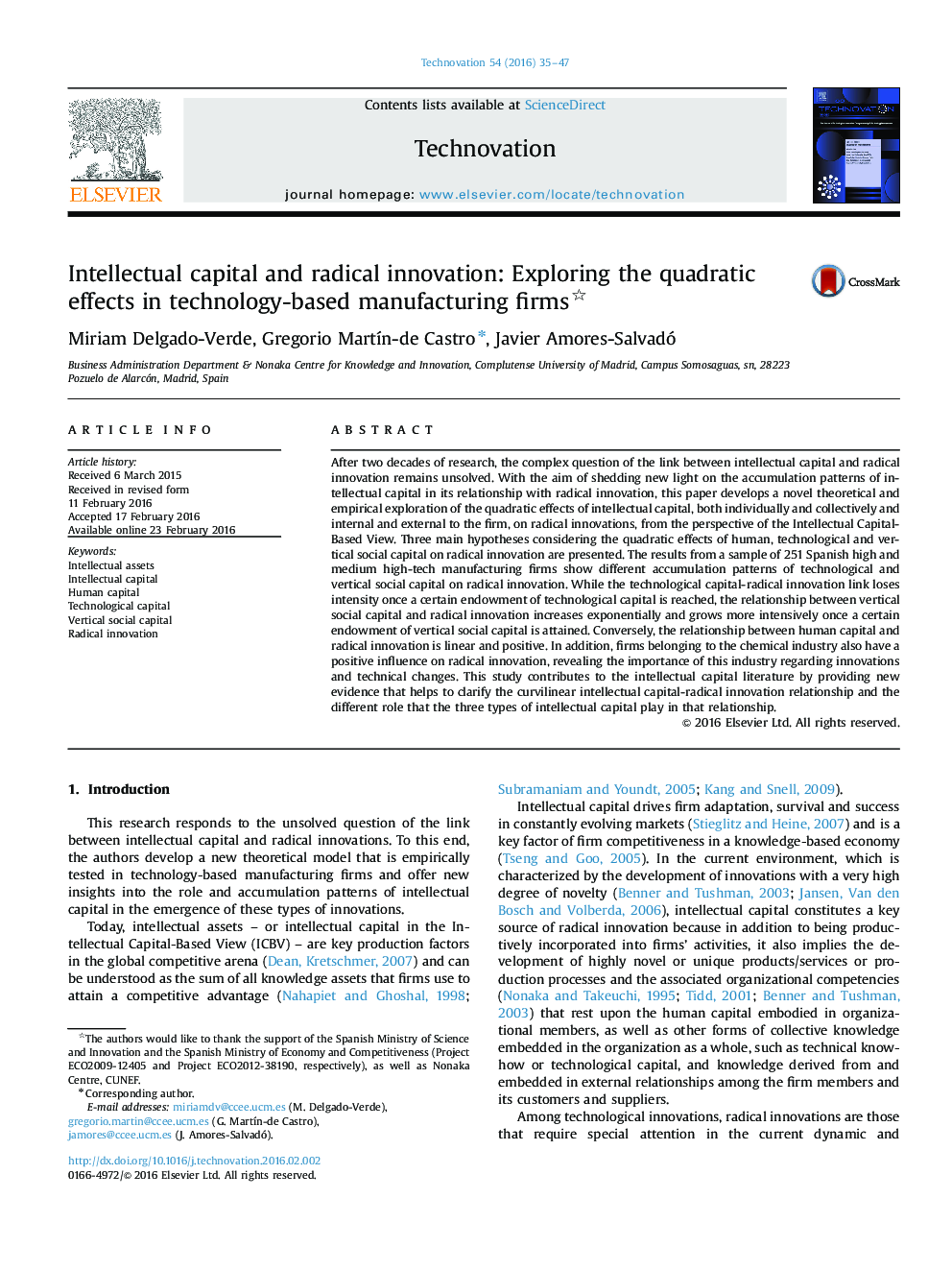| Article ID | Journal | Published Year | Pages | File Type |
|---|---|---|---|---|
| 1021794 | Technovation | 2016 | 13 Pages |
•We analyze the role of firms' intellectual capital components on radical innovation, proposing a quadratic relationship.•We test accumulation patterns of firm’s intellectual capital on 251 Spanish high-tech firms.•Results show that human capital has a linear effect.•Results show that technological capital and vertical social capital have a quadratic effect.
After two decades of research, the complex question of the link between intellectual capital and radical innovation remains unsolved. With the aim of shedding new light on the accumulation patterns of intellectual capital in its relationship with radical innovation, this paper develops a novel theoretical and empirical exploration of the quadratic effects of intellectual capital, both individually and collectively and internal and external to the firm, on radical innovations, from the perspective of the Intellectual Capital-Based View. Three main hypotheses considering the quadratic effects of human, technological and vertical social capital on radical innovation are presented. The results from a sample of 251 Spanish high and medium high-tech manufacturing firms show different accumulation patterns of technological and vertical social capital on radical innovation. While the technological capital-radical innovation link loses intensity once a certain endowment of technological capital is reached, the relationship between vertical social capital and radical innovation increases exponentially and grows more intensively once a certain endowment of vertical social capital is attained. Conversely, the relationship between human capital and radical innovation is linear and positive. In addition, firms belonging to the chemical industry also have a positive influence on radical innovation, revealing the importance of this industry regarding innovations and technical changes. This study contributes to the intellectual capital literature by providing new evidence that helps to clarify the curvilinear intellectual capital-radical innovation relationship and the different role that the three types of intellectual capital play in that relationship.
